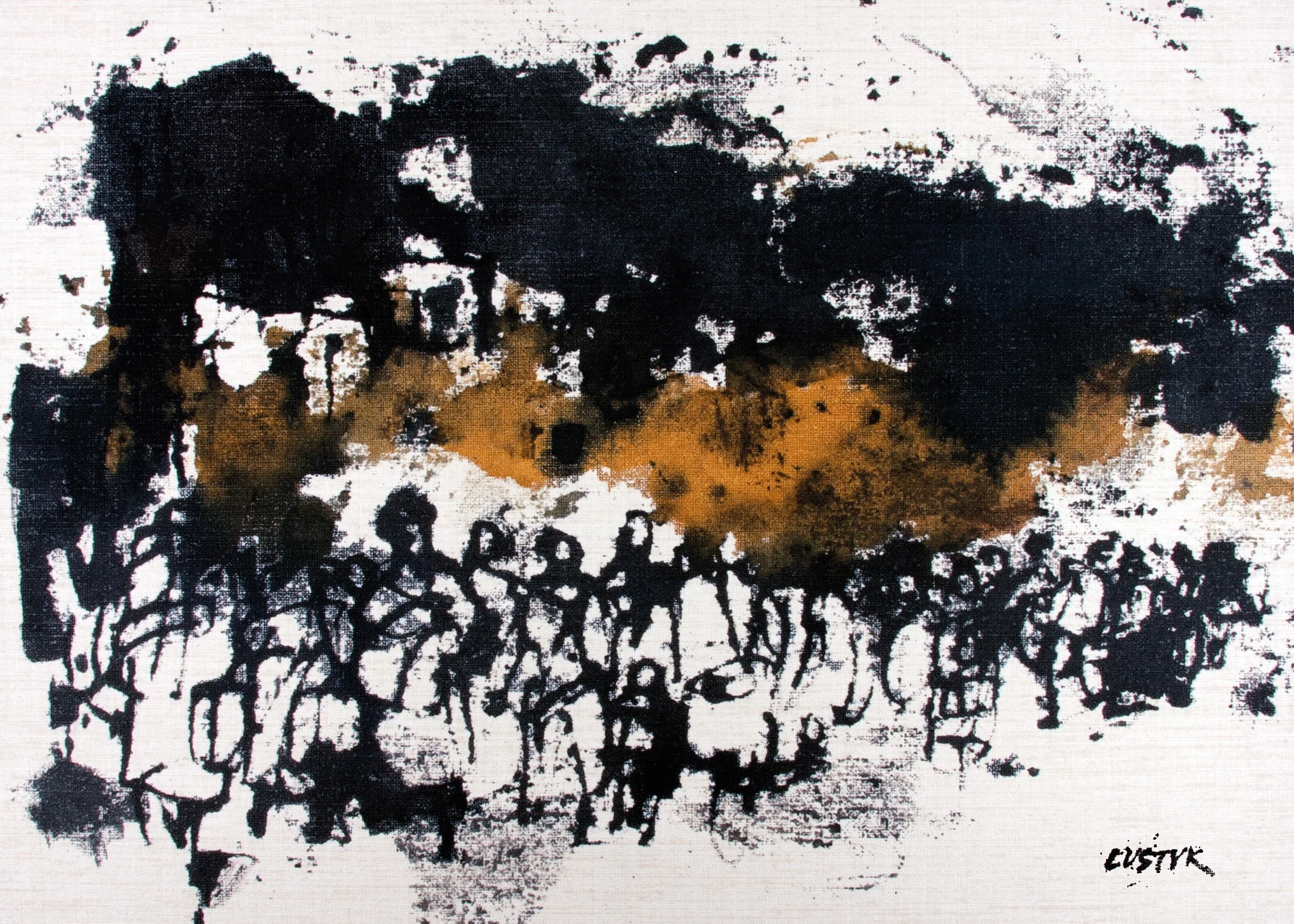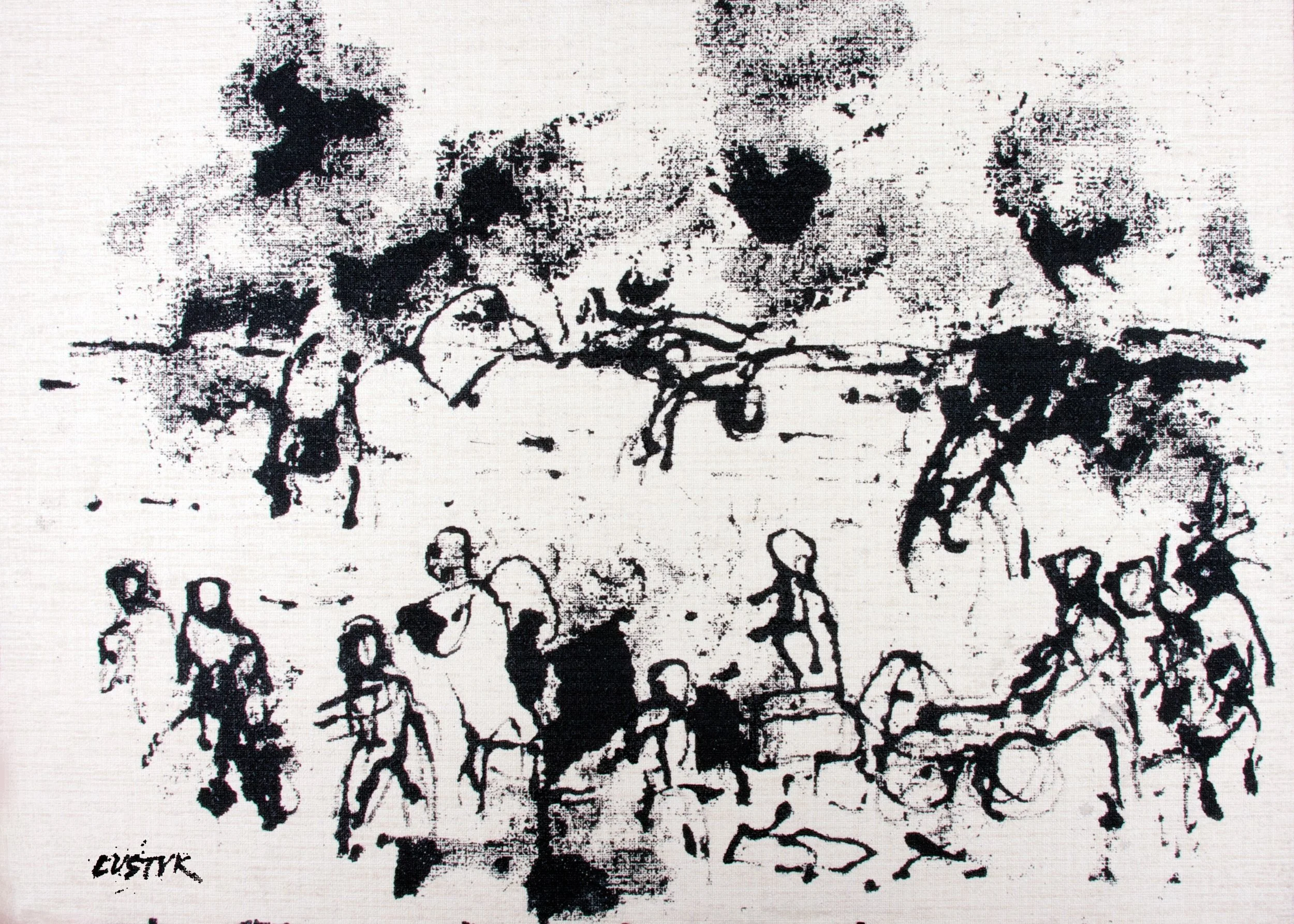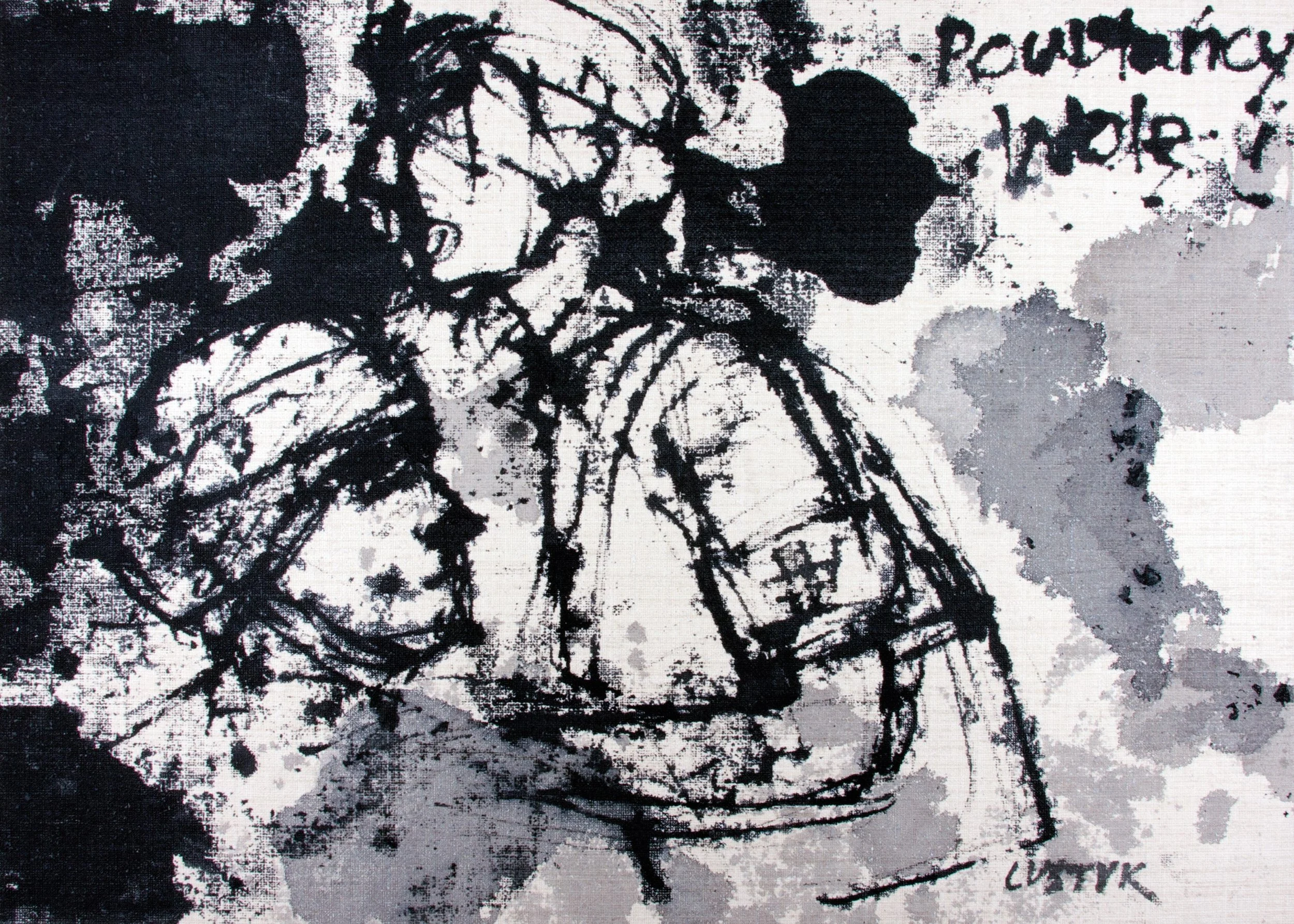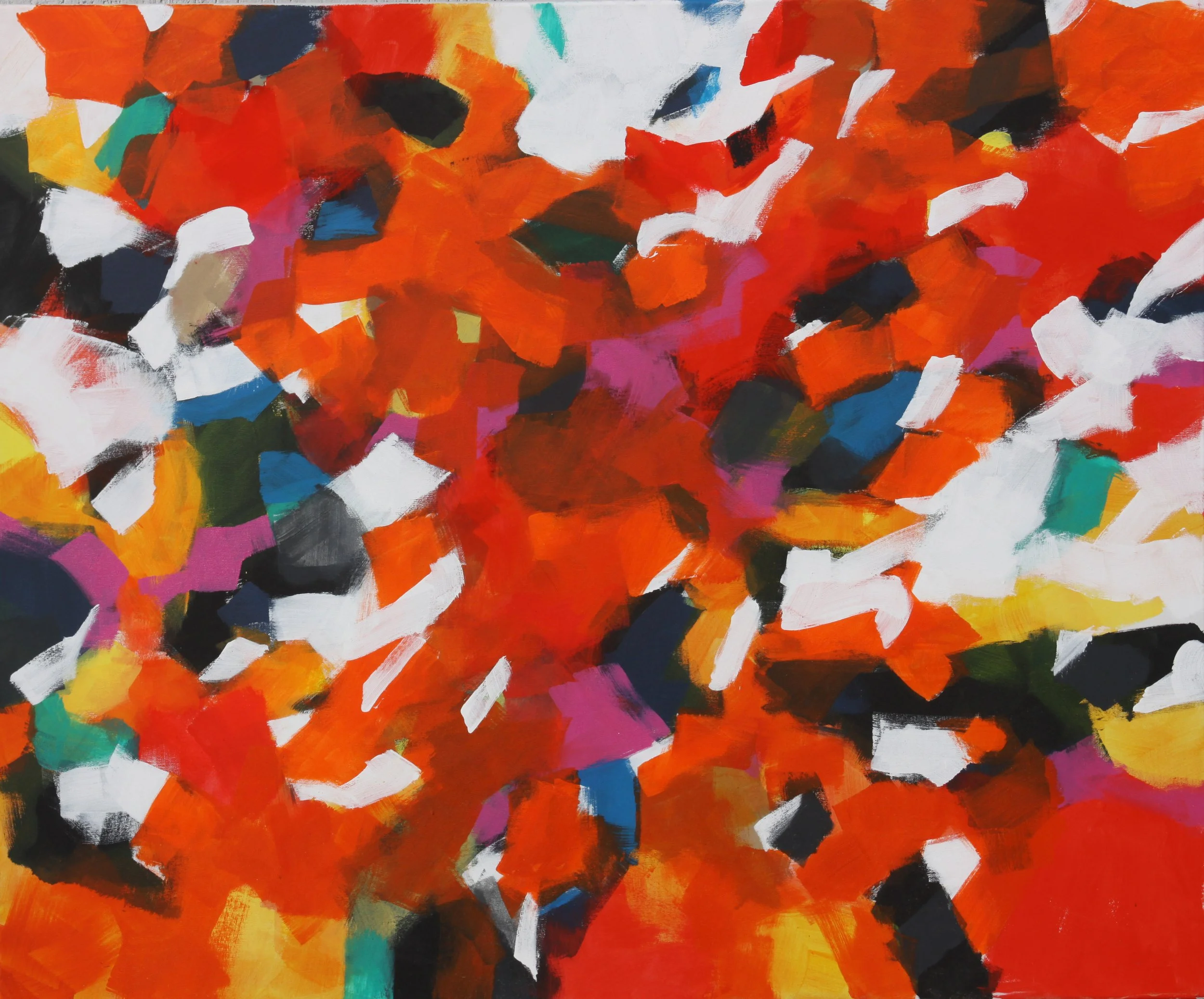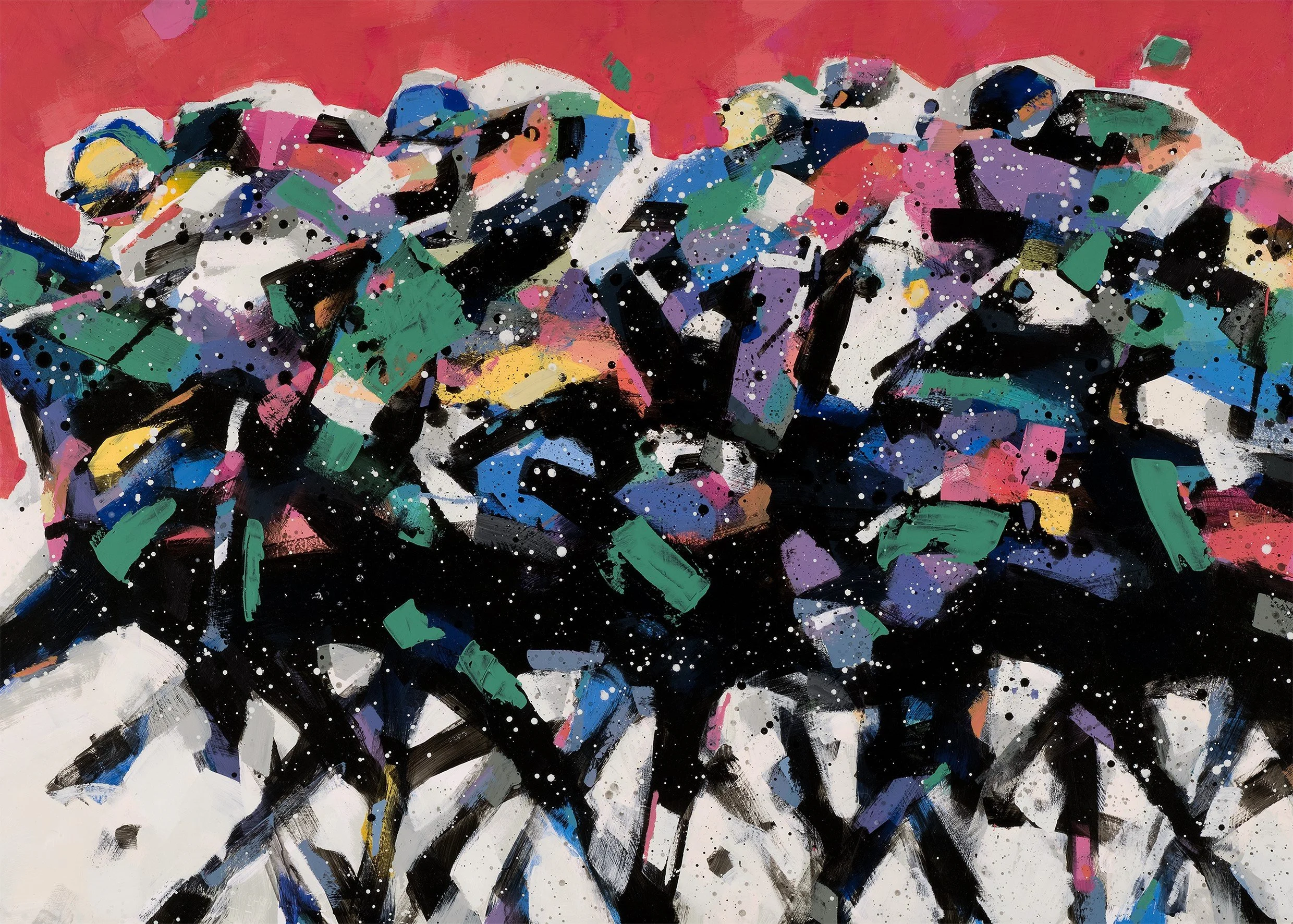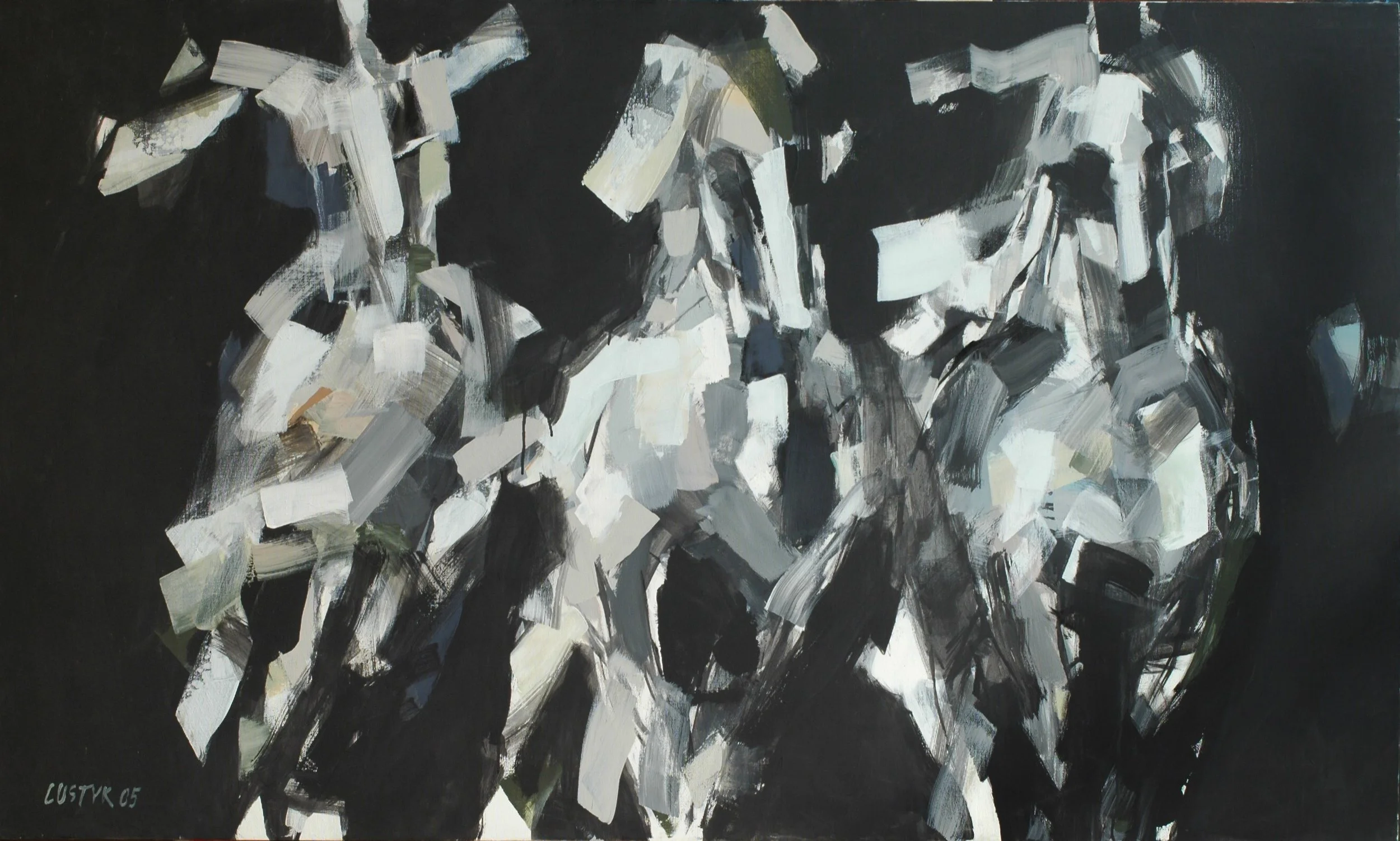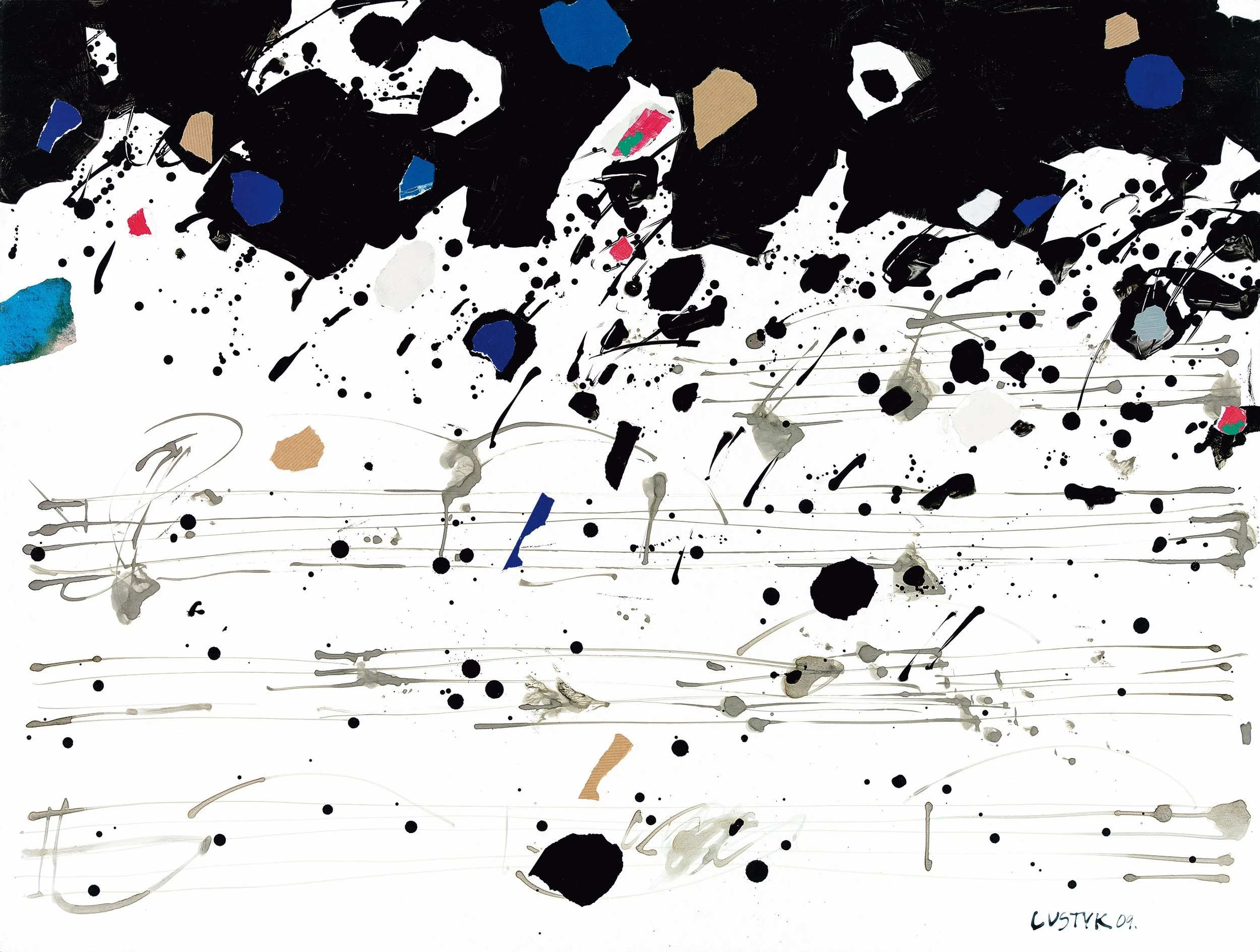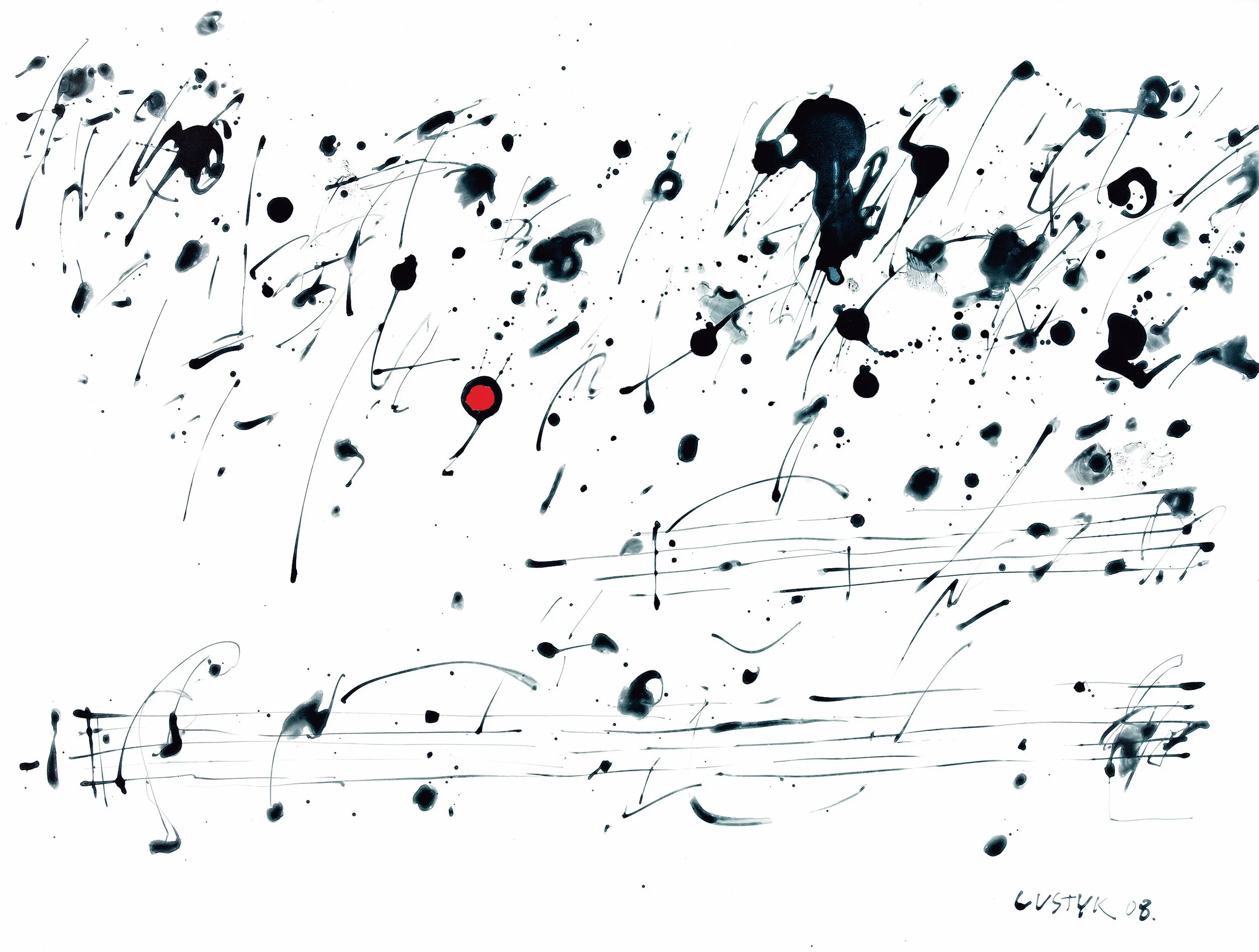Interview with Boguslaw Lustyk
Bogusław, your work spans a wide range of mediums, including painting, sculpture, and applied graphics, often blending the boundaries between them. How do you perceive the relationship between these different forms of art in your creative process, and what drives your choice of medium for a particular project?
My creative process has been guided by two maxims that I learned in school. First is "the multiplicity of reality in art" and the other is "I do not seek I find" that refers to Picasso's statement. Combined with my emotional and open attitude to the world, they give me a wide range of choice and interpretation of topics, means of artistic expression, fascination and creative excitement.
The "Painted Chronicle of the Olympics" project in London under the patronage of the Minister of Culture and National Heritage was a monumental achievement. Can you elaborate on the challenges and inspirations you encountered while visually documenting such a globally significant event, and how you managed to balance artistic expression with the historical weight of the Olympics?
The project “Painted Chronicle of the Olympics” was a natural consequence of my previous attempts arisen from passion for dance, sport and all forms of expression of movement, dynamics and energy. Then the “Calligraphy of Sport” project arose in which I was trying to show various areas of sport using the Japanese calligraphy technique. I continued it as a street performance in London. All this yielded numerous exhibitions and publications, as well as a silver medal of the Polish Olympic Committee.
Your series "Painting Music" was not only a visual experience but also a multi-sensory exploration, with your paintings inspiring musical interpretations. How do you approach the intersection of visual art and music in your work, and what do you believe are the underlying connections between these two art forms that make them so complementary?
The “Painting Music” was an attempt to face Chopin's works. Immersed in his music, I found many elements common to music and visual art. Rhythm, motif, chord, melody line - I have painted a series of abstract paintings basically provoking to instrumental interpretation. An abstract music score. They were presented at exhibitions in Poland and USA combined with their musical interpretation on various instruments. Subsequently to these attempts I painted pictures being a synthesis of music by various composers.
Your installations commemorating the Warsaw Uprising, such as "Today I'm going to fight, Mom" and "Insurgent Lairs," resonated deeply with the public, blending art with historical memory. What responsibilities do you feel as an artist when engaging with such poignant and complex historical events, and how do you navigate the fine line between artistic interpretation and historical accuracy?
As a four-year-old child I survived through the war and witnessed terrible things. It took me a long time to be ready to re-live it in my art. I did not mean to trivialize it and I wanted to reach the emotions of recipients. It was a stuff having a texture of a damaged wall that helped me. I produced a series of expressive compositions and I placed it, together with fragments of the Warsaw Uprising poems on a symbolic barricade in a central place in Warsaw. The result was smashing. I have continued it in various spatial arrangements and with various messages for several years. It has made me opened to use other means of expression, other materials and other techniques. This is how the great project “Exodus” has been originated was created, that was shown at large exhibitions and also inspired the ballet performance.
As the Official Kentucky Derby Artist, you were tasked with capturing the spirit of one of the most prestigious horse races in the world. How did you approach the challenge of encapsulating the cultural significance and energy of the Kentucky Derby in your visual work, and what does this experience reveal about the broader relationship between sport and art?
Horses have always been present in my life. First, those that were wounded and killed during the war, then the country horses that I rode bareback and eventually sport horses. However I have never felt like a horse painter. I looked at horses broader - in a historical, poetic, dynamic and symbolic context. My knowledge and sensitivity to a horse move resulted in the proposal to prepare artworks contributing to the most famous race in America - the Kentucky Derby. I was honored as the Official Artist of the Derby then.
Your involvement with the Grand Theatre of the National Opera in Warsaw has led to large exhibitions and collaborations. How do you see the role of visual art within the context of performing arts, and in what ways do you believe your artwork contributes to the overall experience of the audience in a theatrical setting?
My liaisons with stage began in America. Fascinated by the wealth of creativity in the field of modern dance and theatrical forms, I was determined to paint dance in my own way and to create my own language of theater. I produced two large series of pastels "The Magic of Dance" and "Beside the Theatre" which I presented at an exhibition at the Teatr Wielki – Polish National Opera in Warsaw and so my cooperation with theater and ballet began.
Throughout your career, you have been recognized with numerous awards, including the Silver Olympic Laurel and the Gloria Artis silver medal. How do you reflect on the evolution of your artistic voice over the decades, and what do these recognitions mean to you in terms of your contribution to the cultural landscape?
Awards, prizes and distinctions are just a form of appreciation of the hard and consistent work.
Your retrospective exhibition in 2015 marked 50 years of creative work, offering a comprehensive review of your artistic journey. Looking back on half a century of creativity, how do you perceive the changes in your artistic philosophy and techniques, and what do you consider to be the most significant milestones in your career?
I have always tried to be independent and to go my own way even in USA. America opened up to me new spaces of imagination which, along with my lust to seek new challenges, substantially enriched my art. I traveled a lot, collaborated with artists and galleries and also had my own galleries. I tried to transfer my American experiences to Polish soil, with varying degrees of success.
The Polish School of Posters, of which you are a part, is renowned for its unique blend of graphic design and fine art. How has your association with this movement influenced your approach to poster art, and in what ways do you see the legacy of the Polish School of Posters continuing to evolve in contemporary graphic design?
For several years I was a part of the Polish School of Posters. I received more than 10 awards in competitions, but I realized that the most important thing in a poster is the idea and I was most interested in its graphic form. Therefore I focused on painting and graphics but the poster way of thinking is still present in my paintings.
Having lived and worked both in Poland and the United States for nearly two decades, how have your experiences in these different cultural contexts shaped your artistic practice? In what ways do you see the influence of Polish artistic traditions in your work, even as you’ve engaged with and been influenced by American culture?
I have always tried to be independent and to go my own way even in USA. America opened up to me new spaces of imagination which, along with my lust to seek new challenges, substantially enriched my art. I traveled a lot, collaborated with artists and galleries and also had my own galleries. I tried to transfer my American experiences to Polish soil, with varying degrees of success.





